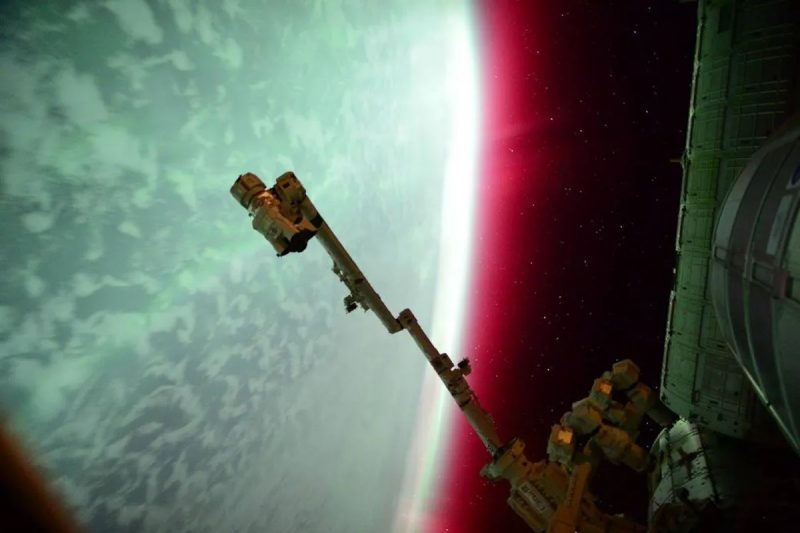This week, space weather has continued to produce vivid displays of the Northern Lights, which are even more amazing from 250 miles above Earth, where astronauts live and work.
At least five strong solar flares with coronal mass ejection throughout the course of the weekend sent charged particles hurtling toward Earth from the Sun. As significant storm impacts began to occur on Monday, the NOAA Space Weather Prediction Center issued a Geomagnetic Storm Warning (level 4 out of 5) for space weather. Since May’s powerful geomagnetic storm that produced auroras even visible in Florida, this solar storm is the strongest ever.
NASA astronaut Matthew Dominick has taken advantage of his exceptional orbital vantage position to take stunning pictures of space, spacecraft, and Earthly weather since landing aboard the International Space Station this spring.
Every ninety minutes, Dominick and the other astronauts on the ISS experience nighttime, which is a great chance to take pictures of the Aurora Borealis. This last weekend was no exception, with the Northern Lights visible and a fresh supply run of camera lenses arriving just in time to aid in capturing the celestial display.
The moon is visible peeking over Earth’s horizon in Dominick’s Sunday night photo, which also features dazzling red and green Aurora lights shimmering beneath the space station.
Dominick shared two different takes on the same image. The astronauts’ perspective of Earth from the ISS cupola is depicted in the first. He claimed that in order to make his photographs appear “more natural” to people who haven’t lived in space, he typically rotates them 180 degrees. He also uploaded a another video that looked down at Earth.
“I suppose I forgot this time, possibly as a result of becoming used to the ‘upside down’ posture. It is ‘right side up’ here. On X, Dominick wrote.
In a recent live chat from the International Space Station, Dominick discussed some of his experiences, including taking pictures of Hurricane Beryl’s eye, with FOX Weather.
